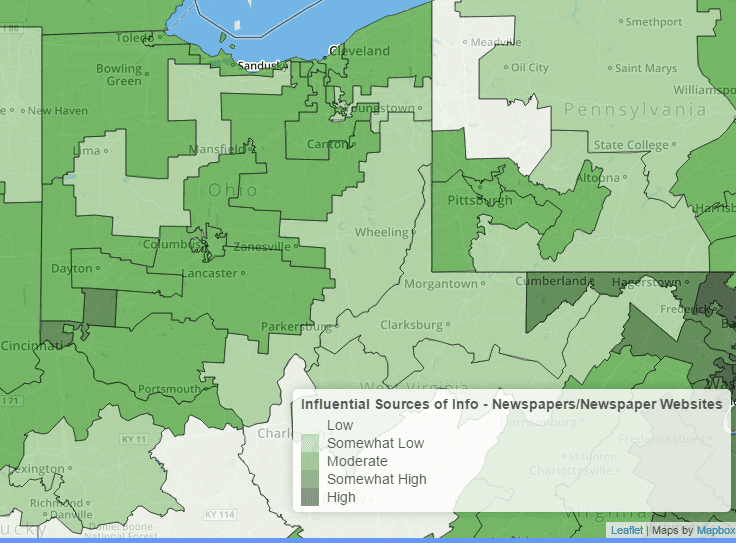Swing states. Indies. Persuadables. Undecideds. They’re at the epicenter of your campaign strategy. But only Resonate’s proprietary, in-depth insights on these audiences can give you a clear roadmap to victory.
Spotlight: Ohio
Here are some exclusive, actionable insights from Resonate that explain what really matters to voters in the Buckeye Swing State.
Ohio Swing Fact #1: Voters want a candidate whose platform includes bipartisanship.
Ohio voters are 17% more likely than the average U.S. voter to prefer candidates whose platform incorporates a bipartisan approach. Other domestic hot buttons include having a plan for creating jobs, addressing entitlement programs and national security
Ohio Swing Fact #2: Slightly more likely than average voter to support NRA
They are 10% more likely than the average American voter to support (and 16% less likely to oppose) the NRA’s positions. Approximately a third of Ohio’s registered voters are persuadable on the topic of gun control.
Ohio Swing Fact #3: Ohio voters are more likely to oppose decriminalization of marijuana.
Ohio voters are 14% more likely than the average U.S. voter to oppose legalizing marijuana. Approximately one-third of Ohioans consider themselves persuadable on the issue.
Ohio Swing Fact #4: Ohio voters are not likely to use exchanges for health coverage.
Buckeye State voters are 24% less likely than the average American voter to purchase or plan to purchase health insurance through the publicly funded exchange. They are also slightly more likely to be unaware of the health exchanges.
Ohio Swing Fact #5: Voters are more likely to rely on media to choose candidate.
Ohio voters are 16% more likely to be influenced by print and online newspapers when determining which candidate to support, when compared to the average U.S. voter. Staying true to their bipartisanship leanings, they are 10% less likely to rely on their political party affiliation during this process.
Pro Tip: When developing state-level message and targeting strategy, be mindful of geo differences, down to the Congressional district level. For example, while the population of Ohio as a whole over-indexes for being influenced by print and online newspapers, there is significant variance between congressional districts. In fact, district OH-4 is less likely than other congressional districts in Ohio to consider newspapers an influential source of information.
Targeting Using Just Demographics Is No Longer a Winning Strategy. Incorporating targeting based on issue affinities and psychographics has proven to be an effective strategy for giving political campaigns or candidates a winning edge. Resonate’s data, such as the examples above, can be quickly activated for digital media targeting and informing both online and offline creative strategy. Targeting voters based on values and the issues they care most passionately drive the most efficient and impactful mobilization.
All data is based on Resonate’s survey of 6,807 Ohio Voters in April 2016.



